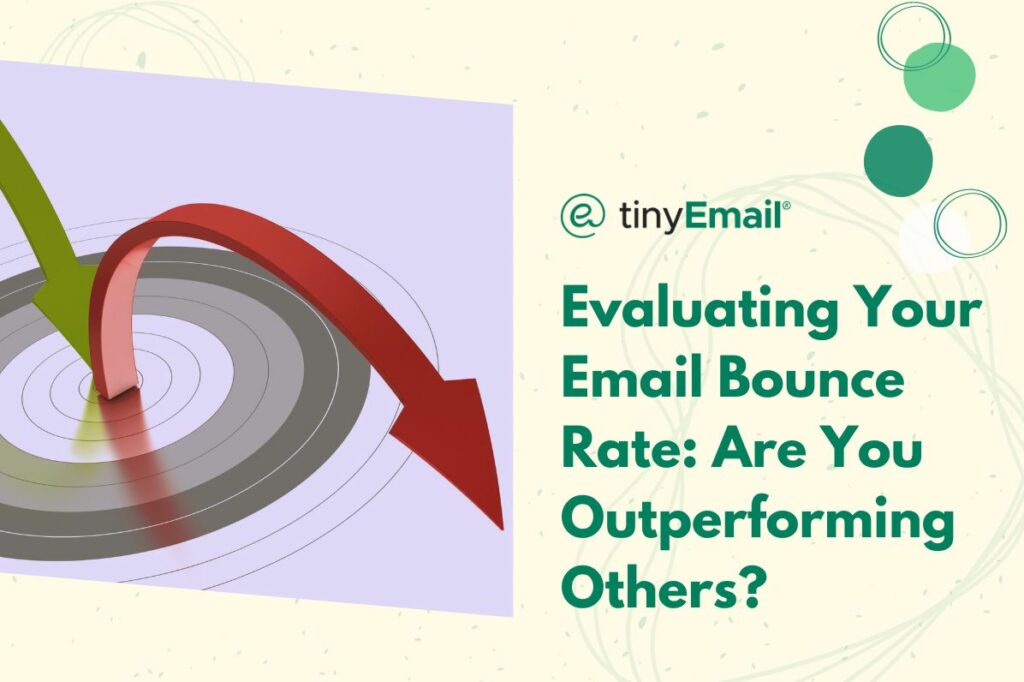In email marketing, all metrics are important. However, one metric that can cause concern is the bounce rate. A high bounce rate indicates that a significant number of emails failed to reach their intended recipients.
An email marketer’s bounce rate will almost never be zero, because there are many factors that can result in a bounce that the marketer simply doesn’t control, such as technical issues with the recipient’s email server. So, how do you know if your bounce rate is cause for concern or not?
To assess the performance of your email campaigns, it is essential to determine whether your bounce rate is better or worse than others in your industry. So, let’s explore how you can evaluate your bounce rate and understand how it compares to industry benchmarks.
Industry Benchmark
To gain perspective, begin by researching industry-specific benchmarks for email bounce rates. According to Campaign Monitor, the standard bounce rate across the board is 2%. However, this number can change depending on a few factors.
Email bounce rates can vary by industry, as different industries may have unique characteristics, target audiences, and email practices that can influence the bounce rates they experience. For example, industries with inherently higher turnover rates or transient customer bases, such as travel and hospitality, may experience higher bounce rates due to frequent changes in email addresses or temporary accounts.
On the other hand, industries with more stable customer bases, like healthcare or finance, may have lower bounce rates. If your target audience consists of older individuals who may be less active online or have outdated email addresses, you may encounter higher bounce rates compared to industries targeting tech-savvy and younger audiences.
This is why you need to do your research on what the benchmark is for your specific industry. By comparing your bounce rate against the average for your industry, you can better assess whether your performance is in line with expectations.
Time Frame
Analyze your bounce rates over a specific period, such as monthly, quarterly, or annually. Look for seasonal trends or fluctuations that may affect your bounce rate. For example, during the holiday season, people may change their email addresses or experience full inboxes, leading to a temporary increase in bounce rates.
List Segmentation
Evaluate bounce rates for different segments within your email list. Comparing bounce rates among subscriber categories – like new subscribers, engaged users, or inactive users – to identify patterns and potential areas for improvement. This analysis helps you determine the impact of list quality and engagement levels on your bounce rates.
Campaign Type
Different types of email campaigns may yield varying bounce rates. Analyze the bounce rates for different campaign types, such as newsletters, promotional emails, or transactional emails. This analysis allows you to identify whether certain campaign types consistently have higher or lower bounce rates, and then adjust your strategies accordingly.
Email Service Provider (ESP)
Consider the bounce rates reported by your email service provider (ESP). Many ESPs provide industry benchmarks that allow you to compare your bounce rates against similar organizations. Evaluate if any technical issues or deliverability challenges with your chosen ESP may contribute to higher bounce rates.
Email Authentication and Reputation
Implement proper email authentication protocols, including SPF, DKIM, and DMARC, to enhance your email deliverability. Monitor your sender reputation closely and evaluate bounce rates as an indicator of reputation health. Check for any blacklisting or deliverability issues that may contribute to higher bounce rates.
List Hygiene Practices
Regularly clean your email list by removing invalid or inactive email addresses. Implement double opt-in processes to ensure valid email addresses are added to your list. Pay attention to subscriber complaints and unsubscribe requests, as these can indicate potential issues with your list quality and impact your bounce rates.
Content and Design
Evaluate the quality and relevance of your email content. Make sure that your emails are properly formatted, mobile-friendly, and accessible to all recipients. Review your subject lines and pre-header text to improve open rates and reduce bounce rates. Engaging content and a well-designed layout contribute to better email deliverability.
Deliverability Monitoring
Use email deliverability tools to monitor your email performance. Track metrics such as inbox placement rate and spam complaint rate to assess the effectiveness of your email campaigns. Identify any patterns or issues that may contribute to high bounce rates and take proactive measures to address them.
Conclusion
Determining whether your email bounce rate is better than others requires a comprehensive evaluation that considers:
- Industry benchmarks
- List segmentation
- Campaign types
- Email authentication
- List hygiene
- Content and design
- Deliverability monitoring
- Continuous improvement
After your analysis, you can make data-driven adjustments and optimize your email marketing campaigns, enhance deliverability, and achieve better results than your competitors.


